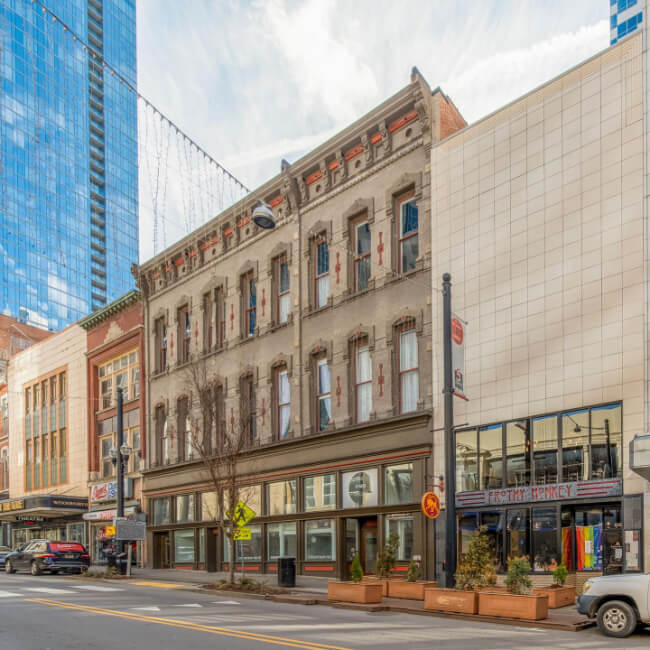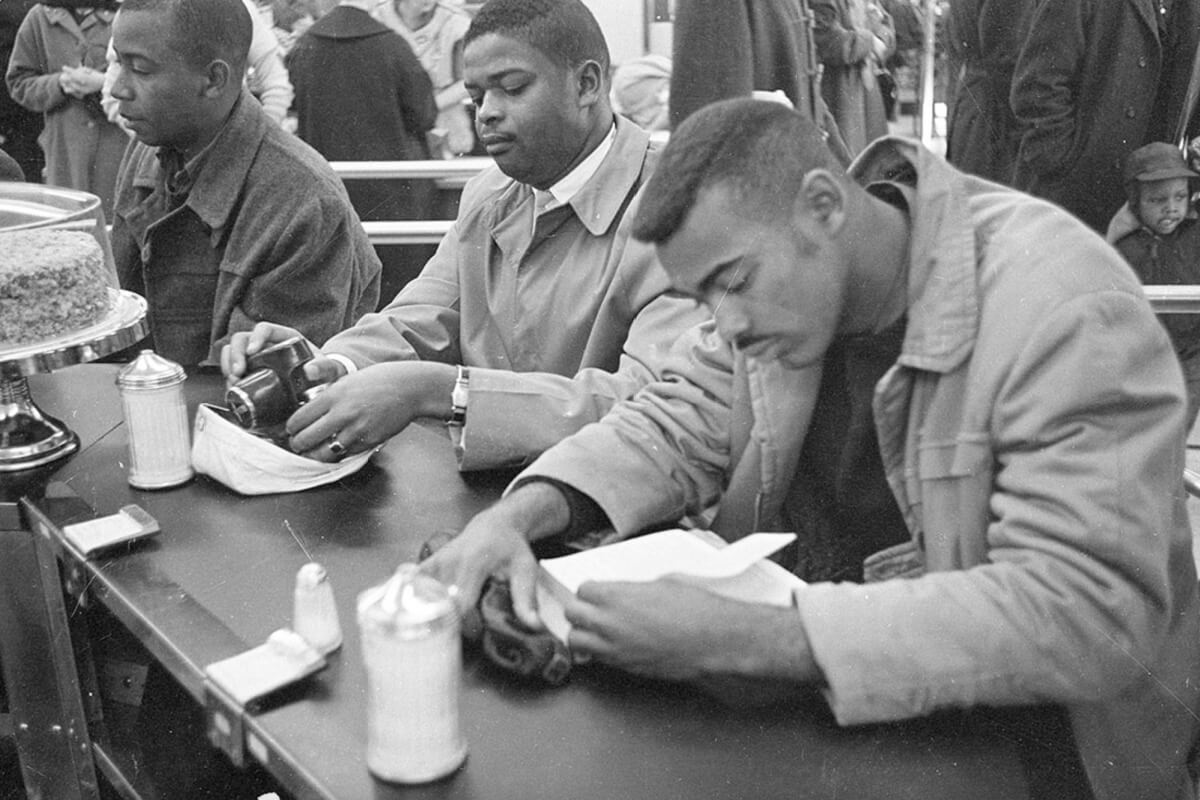Did you know Nashville was the first major city to officially desegregate public lunch counters?
The 1960 Nashville sit-ins marked a defining moment in the Civil Rights Movement, as determined and dedicated students challenged segregation at lunch counters across the city. Remarkably, three of these historic protest sites still stand today — transformed, yes, but steeped in history.
These Nashville landmarks are architectural reminders of a significant chapter marked by courage and resilience. Let’s look at the history of the Kress Building, the Woolworth Building, and the McClellan Building.
The Kress Building
Location: 239 Rep. John Lewis Way N, Nashville, TN 37219
Nashville’s Kress Building is an Art Deco-style structure that originally existed as part of the S.H. Kress & Co. chain of five-and-dime stores — common fixtures in downtown areas across the country. Constructed in 1935, the Nashville Kress store was known for its elegant architectural design, featuring ornate detailing, figures from Greek mythology, and large display windows.
During the Nashville sit-ins of 1960, the Kress Building became one of the many sites where Black students and activists protested against segregation at lunch counters. These nonviolent demonstrations were led by students from local historically Black colleges, including Fisk University, Tennessee A&I (now Tennessee State University), and American Baptist College.
Inspired by similar actions in Greensboro, NC, the Nashville sit-ins aimed to challenge the practice of segregated dining in department stores and other businesses. Protesters sat at the “whites-only” lunch counters inside stores like Kress, Woolworth’s, and McClellan’s, refusing to leave until they were served. The sit-ins were met with hostility, arrests, and violence but ultimately contributed to the desegregation of public spaces in Nashville and beyond.
Today, the Kress Building has been transformed into the Kress Lofts, a residential and commercial space that retains much of its original historic charm. The lofts offer upscale urban living in the heart of downtown, blending history with contemporary amenities.

The Woolworth Building
Location: 223 Rep. John Lewis Way N, Nashville, TN 37219
The Woolworth bBuilding was constructed in the 1890s and housed quite a few businesses before becoming part of the popular Woolworth department store chain in 1913. Like many Southern department stores at the time, Woolworth’s enforced segregation. Established in 1925, Woolworth’s lunch counter began serving meals to employees and shoppers. However, under the prevailing Jim Crow laws, Black people were barred from dining there.

Supported by activists like Diane Nash, John Lewis, and James Lawson, who were instrumental in shaping the Civil Rights Movement, students took their places at the Nashville Woolworth’s lunch counter on February 13, 1960, conducting the first large-scale organized sit-in.
After the decline of downtown department stores, the Woolworth Building fell into disrepair. It was later revitalized, however, and today, it operates as the Woolworth Theatre, a venue that blends history with entertainment. A performance space, the theater hosts live shows, including the Shiners musical-comedy production.

The McClellan Building
Location: 231 Rep. John Lewis Way N, Nashville, TN 37219
Initially built in the 1890s for Ocean Confectionary, this mid-rise building became the home of McClellan’s five-and-dime store in 1927. On February 27, 1960, violence erupted at McClellan’s and other targeted locations as white counter-protesters harassed the student activists. The sit-in turned violent when white men dragged an African American man off of his lunch counter seat and physically assaulted him.
Reprehensibly, law enforcement arrested the demonstrators rather than their attackers, charging over 150 men and women with “disorderly conduct.” The students chose jail over bail, gaining national attention and strengthening the Civil Rights Movement.
Today, the McClellan Building has been repurposed as the Art Avenue Lofts, a mixed-use space. The building now houses artist studios, 32 upper-floor loft apartments, and retail spaces. Preserving much of its architectural integrity, the lofts have retained the original hardwood floors, windows, and exposed brick. Given its proximity to the Kress Building, the two historic structures also share a rooftop terrace.

Although the lunch counters are gone, these three buildings are longstanding symbols of Nashville’s past. They remain a powerful reminder of the courage and determination of the Nashville student activists who helped dismantle segregation and advance the fight for racial equality.
If you want to dive even deeper into Nashville’s role in the Civil Rights Movement, we recommend the following local resources: The Civil Rights Room at the Nashville Public Library, the National Museum of African American Music (NMAAM), the Tennessee State Museum, and the revitalized historic Jefferson Street.
**********
For a daily dose of StyleBlueprint sent to your inbox every morning, click HERE!



















